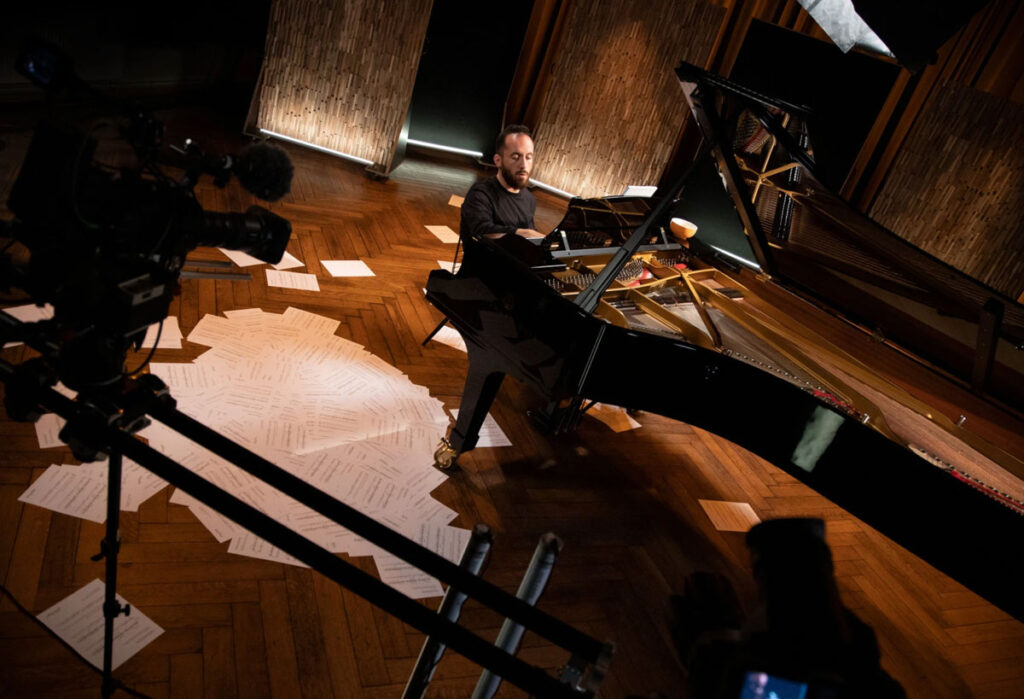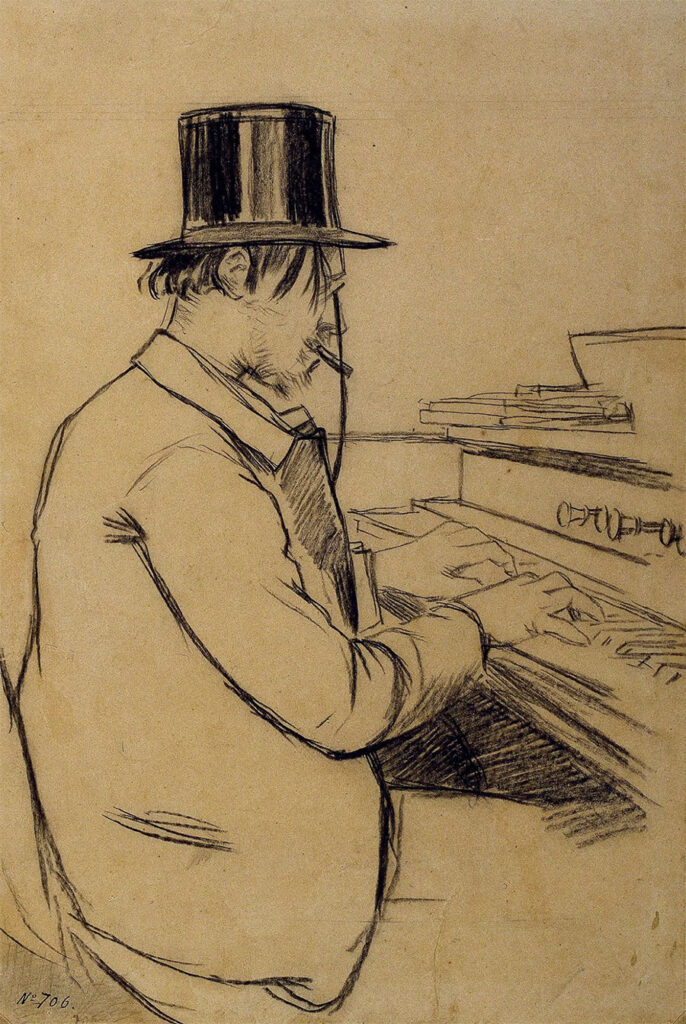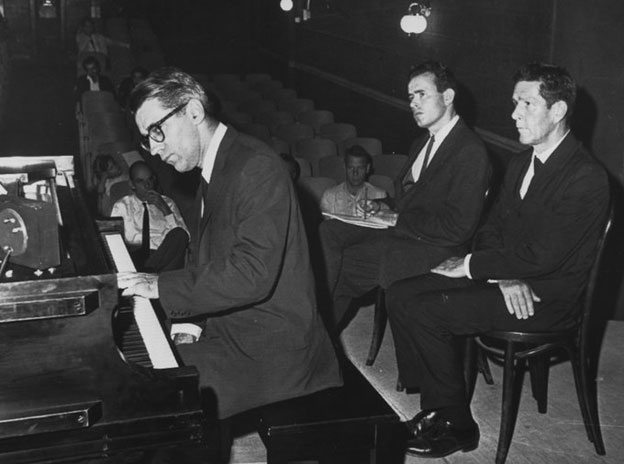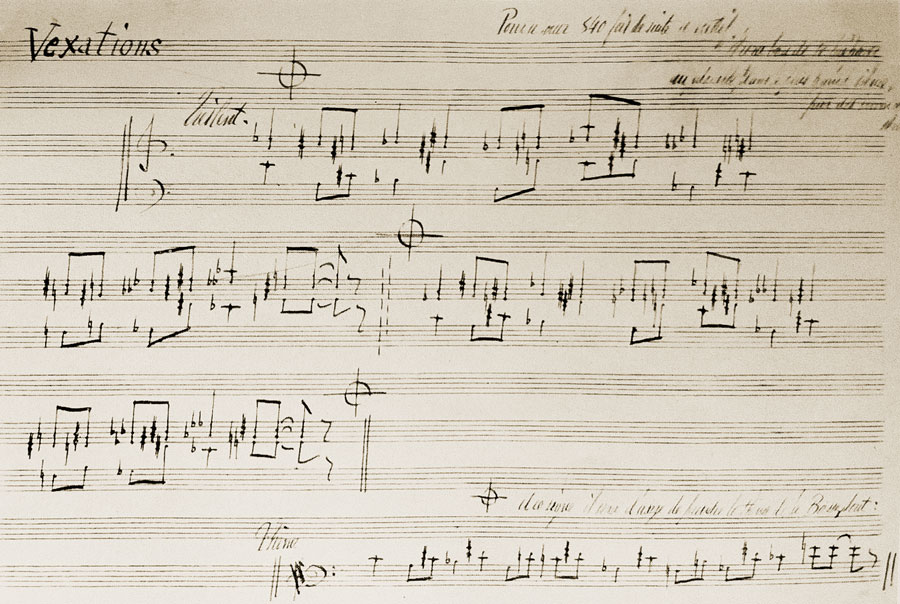Vexations – Was Igor Levit’s Lonely Stroll Too Long?
In a bid to raise awareness of all musicians who have been silenced by the coronavirus pandemic, finding themselves suddenly out of work, pianist Igor Levit performed Erik Satie’s piano piece Vexations in a 15-hour long virtual performance on May 30.

Watch the complete recording of the livestreamed event >>
The inhuman marathon challenge ”doesn’t feel like a ‘nuisance’ or ‘torture’ to me, as the title would suggest, but rather a retreat of silence and humility. It reflects a feeling of resistance”, Levit said prior to the performance. However, after the session he said: “I got so tired that literally my fingers stopped moving… Maybe a chord came a second late, but nobody died because of it. I’m OK with that; it’s part of the performance.” Levit continues; “That’s why it feels right to play the Vexations right now. My world and that of my colleagues has been a different one for many weeks now and will probably remain so for a long time. Vexations represent for me a silent scream.”
The event was massively noted by the international press:
The Gilmore
NY Times
The New Yorker
Vexations – a mysterious piece
Vexations was written in 1893 and the manuscript score is just four lines of music. No instrument is indicated but it is probably intended for harmonium or piano. The score also includes a mysterious inscription for the performer: ”In order to play this motif 840 times in succession, it would be advisable to prepare oneself beforehand, and in the deepest silence, by serious immobilities.”
The minimalist composition is the first known experiment in organized total chromaticism and continual, unrelieved dissonance with no obvious sense of direction or tonal centre. It is the first piece to explore the effects of boredom, even of hallucination, both on the performer and on the audience.
Vexations – PDF piano score to download:


Santiago Rusiñol, Portrait of Erik Satie Playing the Harmonium, 1891.
Historic performances
The world premiere which took place in 1963 at the Pocket Theater in New York City, was organized by avant-garde composer John Cage and performed by a team of 11 pianists dubbed “The Pocket Theatre Piano Relay Team” playing in twenty-minute shifts. That first performance lasted nearly 18 hours and 40 minutes and has become the stuff of legend. The New York Times wrote: ”Whatever it was, it made musical history.” The Pocket Theater in 1963 offered no Green Room and the event was casual. Some players even left at one point to have dinner in Chinatown.

The John Cage team during the 1963 performance of “Vexations” at the Pocket Theater in New York.
Contradictory to Satie’s instruction “to prepare oneself beforehand…”, the piece is often performed by a team of pianists sharing the task. In an earlier solo attempt in 1970, pianist Peter Evans nearly lost his senses while attempting all of “Vexations” on his own. He quit after 595 repetitions and was said to have experienced evil thoughts and visions. Mr. Evans later claimed that pianists who take on the piece “do so at their own great peril.” Some call the piece dangerous and evil. Many pianists believe from performing the piece, that the material mystically somehow defies memorization.
840 times of what?
Although the inscription suggests how to prepare if one would play the motif 840 times, the score contains no repeat signs or da capo instructions that indicates that the piece should be repeated. But if one insists to take the “840 times” suggestion seriously, what is then the word “motif” referring to? A motif is usually a shorter musical enitity than a “theme” but in this case it seems most reasonable that the “motif” is the 13 beats long “theme”. In the score this motif exists in three differently arranged versions and, if played in tempo 40 BPM, each version of the “motif” takes 19,5 seconds. Consequently, a “complete” performance takes around four and a half hours.
Cast your vote!
Have Cage, Levit and others misinterpretated the instruction regarding the “motif”? What do you think?
Please vote and post your comment below!

Comments
The x 840 repetition applies to the structure A-B-A-C, A being the 4th line of the manuscript, otherwise called the “theme”, B being the first “bar” (1 line + half of line 2 = 13 beats), and C the second half of line 2 + line 3, 13 beats again. These instructions are from the hand of Satie himself down below, where he explains that the so-called left hand theme (4th line = what I named “A”) is to be played wherever the “celtic cross” sign is located, i.e. once before the first bar, and once before the second bar. Hence the “theme” gets played 4 times for each repeat, the right hand part being varied with chord inversions between parts B and C, which, for an accomplished composer, seems just a bit “vexing”, as one would have hoped for more chromatic or tonal accidents, yet there are just none. Of course, this small vexation is not of the same order of magnitude as the x 840 repetition which is an insult to the pianist. I rest my case ! LOL …..
A worthless exercise by a notorious self-publicist
There are as many varieties and waves of sound as grains of sand on the seashore. Worthwhile music distinguishes and separates the attractive and meaningful sonorities from the ever present mundane and unattractive. I’m not interested in focusing my precious musical time, attention, and energy on the off-putting, the ugly, the cacophonous, the nonsensical, the negative, the preposterous, the ridiculous. Great art attracts, awes, ennobles, inspires and musical genius sifts the good from the bad and clarifies it. There is enough despair in life without devoting effort to increase it. This composition is an exercise in futility and insanity.
I think Satie would cackle with glee if he knew how upset he has made people over 100 years later with this composition.
The pianostreet is literally the BEST blog I read it everyday I m also grateul i found it help me a lot. Hope this to help others too.